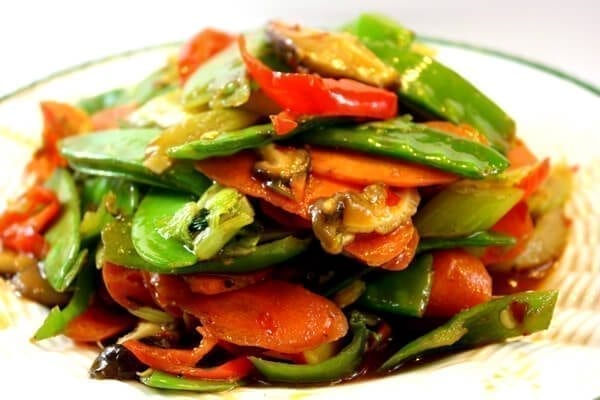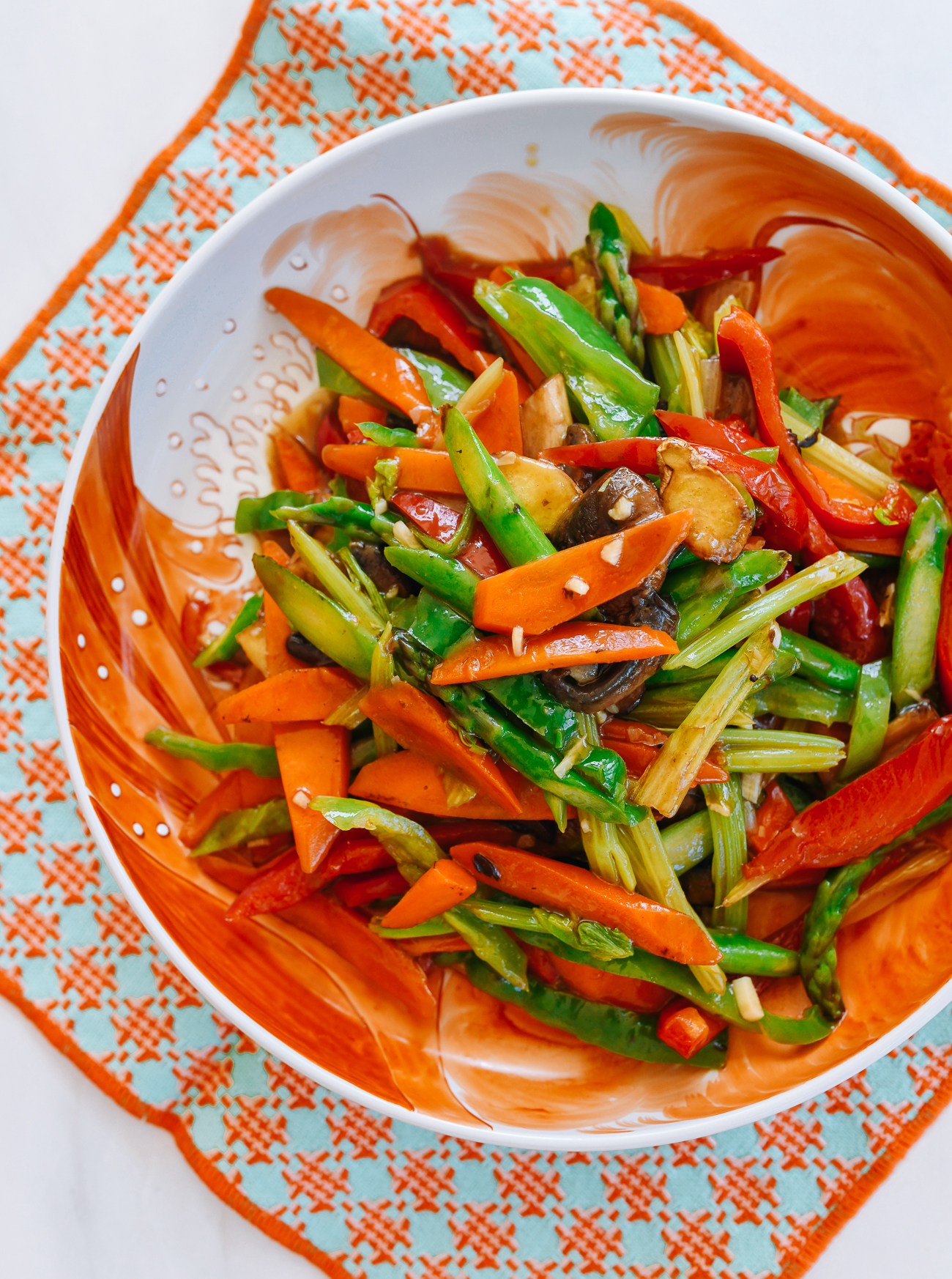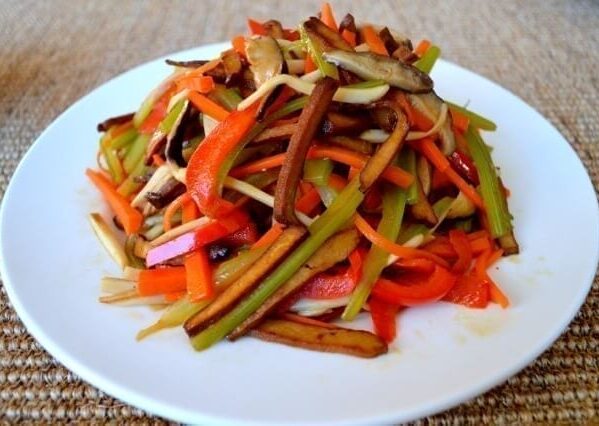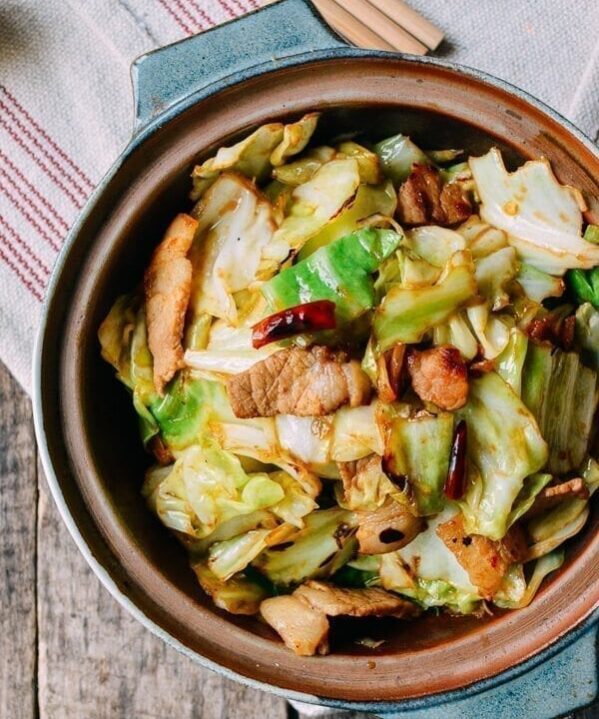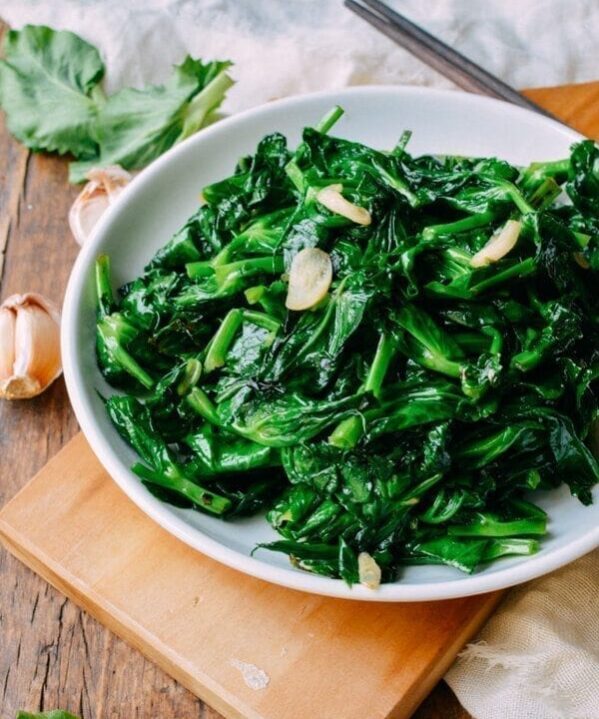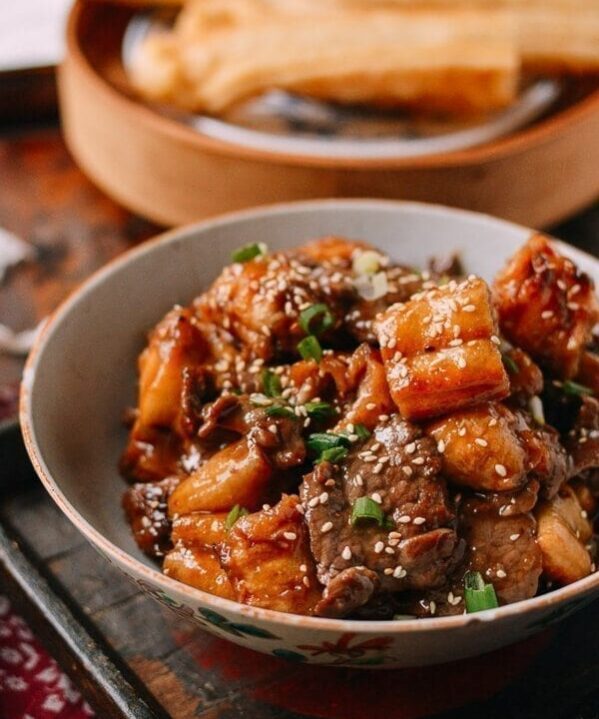Use whatever vegetables you have on hand to make this everyday vegetable stir-fry. It’s a great way to use up bits of vegetables you don’t know what to do with, and to get a big dose of colorful veggies into your diet!
We call this an “everyday”stir-fry, because it’s such a flexible recipe, you could eat it every day, and still have variety.
We’re using mushrooms, carrots, celery, asparagus, and peppers in this version, but you could also use broccoli (even the stems!), cauliflower, zucchini, yellow squash, snap peas, and/or snow peas!
While you can also add Chinese ingredients (such as lotus root, wood ears, celtuce, etc.), you don’t need any specialty Chinese vegetables for this recipe. You can whip it up with veggies you can find at any grocery store.
Note: This recipe was originally published in June 2013 (it was the second recipe we ever posted!). We have since re-tested, rephotographed, and updated the recipe with metric measurements, nutrition information, new photos, and more! Don’t worry, though. If you’d like the original version of the recipe, you can still find it at the bottom of the post.
Why You Need This Vegetable Stir-fry
This everyday vegetable stir-fry was one of the very first recipes we posted on the blog way back in 2013, and for good reason.
This stir-fry has shown up on our dinner table in some form or another for decades. Why?
Because all too often, when we’ve got lingering veggie scraps in the fridge at the end of the week—bits and pieces we haven’t used—we pull out this recipe and use whatever we have on hand to make an easy side dish.
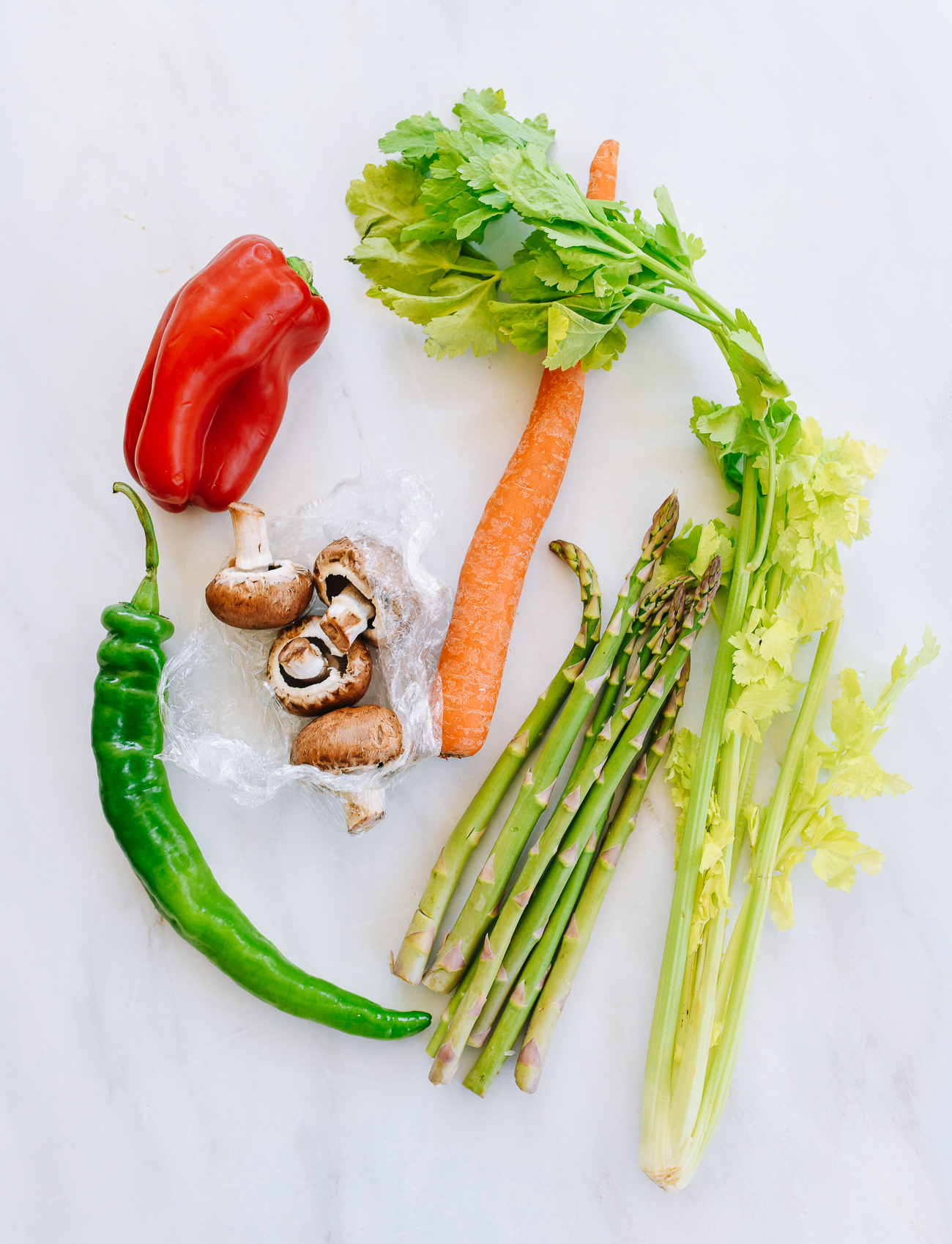
I’m sure you’ve also been in the same situation. What to do with a final handful of mushrooms that might turn fuzzy if they don’t get used in the next few days. Or that half of a bell-pepper you have left over from another recipe. Or perhaps those limp stalks of celery languishing in the crisper drawer?
This recipe is your answer!
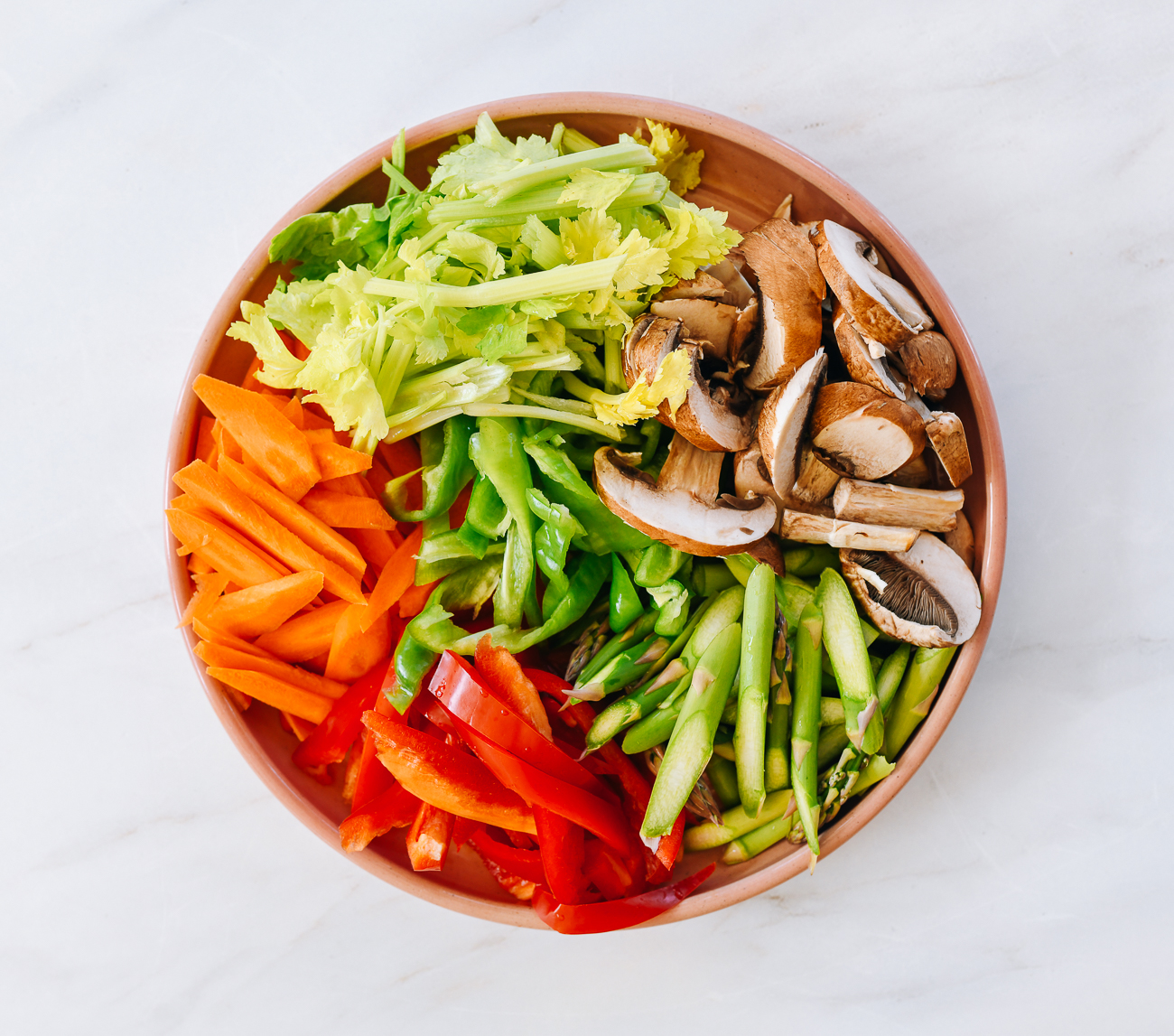
The Ultimate Flexible DISH
While I’ve written the recipe with 6 specific veggies, you can substitute whatever you have on hand as long as they’re not super tender leafy things like baby spinach, which might be a bit too delicate for a stir-fry like this.
I call for 6 cups of veggies total. As long as you have 6 cups, you can use whatever you like. You don’t even need 6 different vegetables—you could use just 3 or 4 if that’s what you have.
The key is making sure that all your veggies are sliced thinly (for quick cooking), and that all of the veggies are sliced into roughly the same size and shape, so they cook in about the same amount of time.
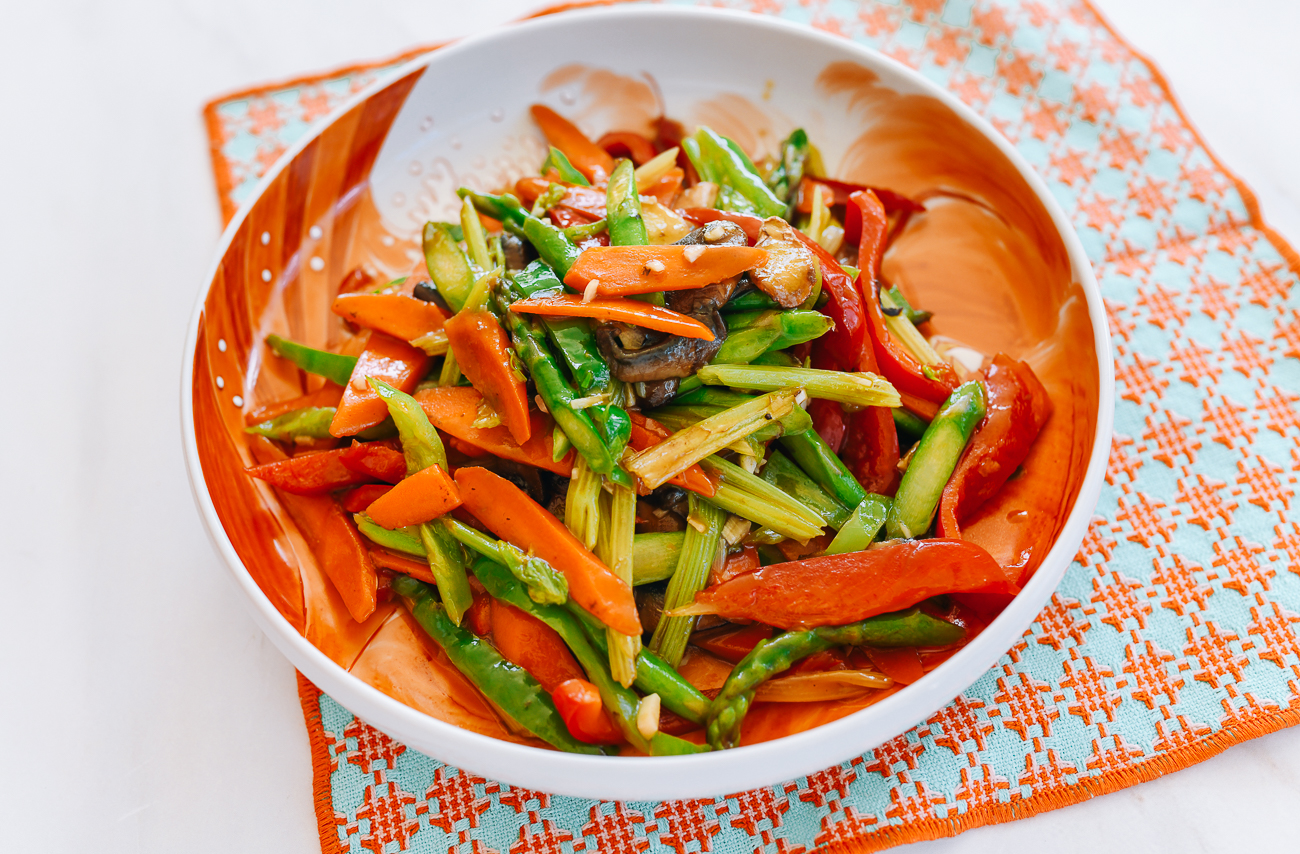
This consideration is one of our key tips for stir-fries in general. (Check out my mom’s article: How to Make Stir-fry the Right Way for more tips.)
Recipe Tips
Here are some other specific tips to think about:
- If using mushrooms, it’s a good idea to give them a little bit longer to cook, so they don’t turn out rubbery. This is why I cook the mushrooms for a bit before adding the other vegetables.
- If using broccoli or cauliflower, it’s a good idea to separate them into smaller florets, or even to slice them, so they cook at a similar rate as a thin slice of carrot. You can also blanch them beforehand if you want larger florets, but cutting them into smaller pieces is the simpler way.
- It’s also a good idea to slice vegetables on a diagonal, particularly fibrous ones like asparagus and celery. Not only is it prettier, it also results in a more tender texture. Check out my Chicken and Asparagus Stir-fry recipe for an explanation!
Ok, without further ado, on to the recipe:
Vegetable STir-fry Recipe Instructions
In a liquid measuring cup, combine the water (or chicken stock), Shaoxing wine, oyster sauce, salt, sugar, sesame oil, and white pepper.
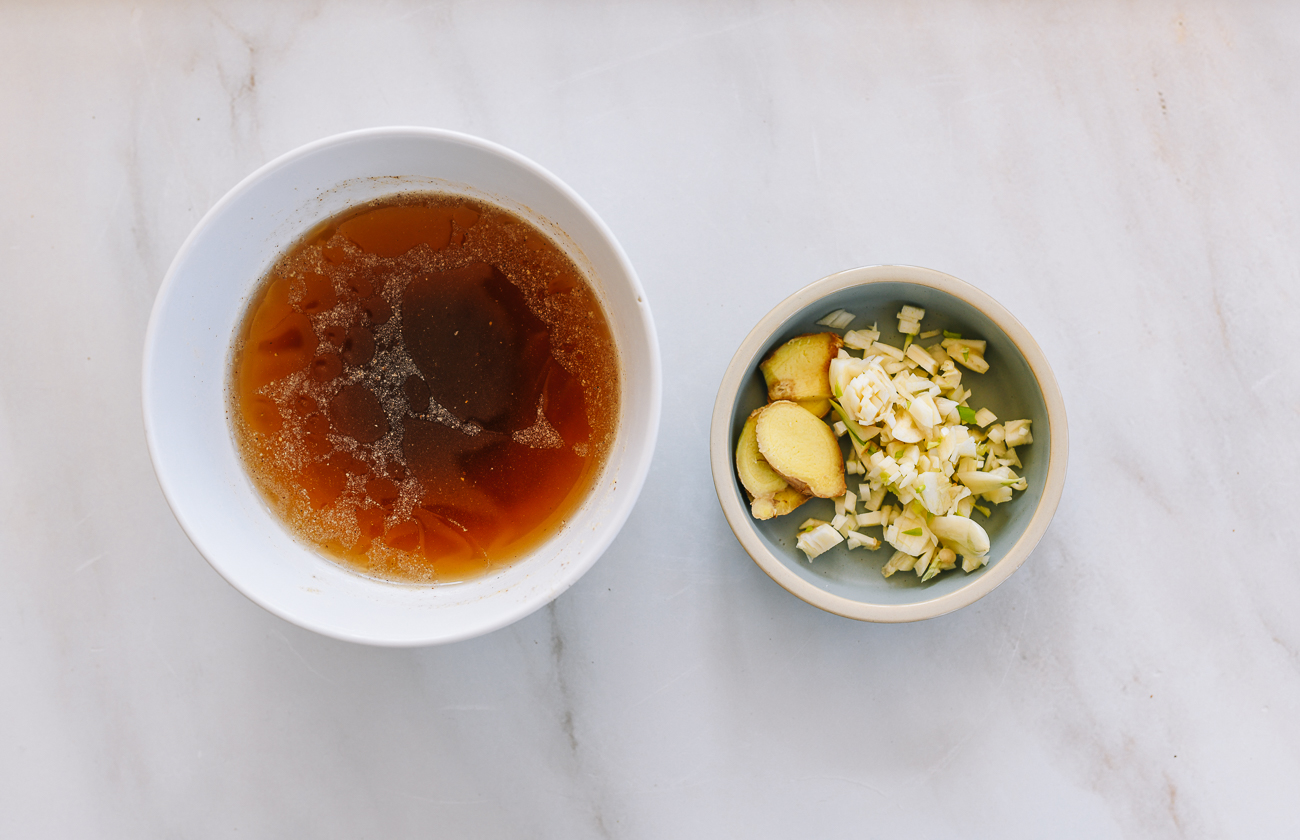
In a wok over medium heat, add the oil and ginger.
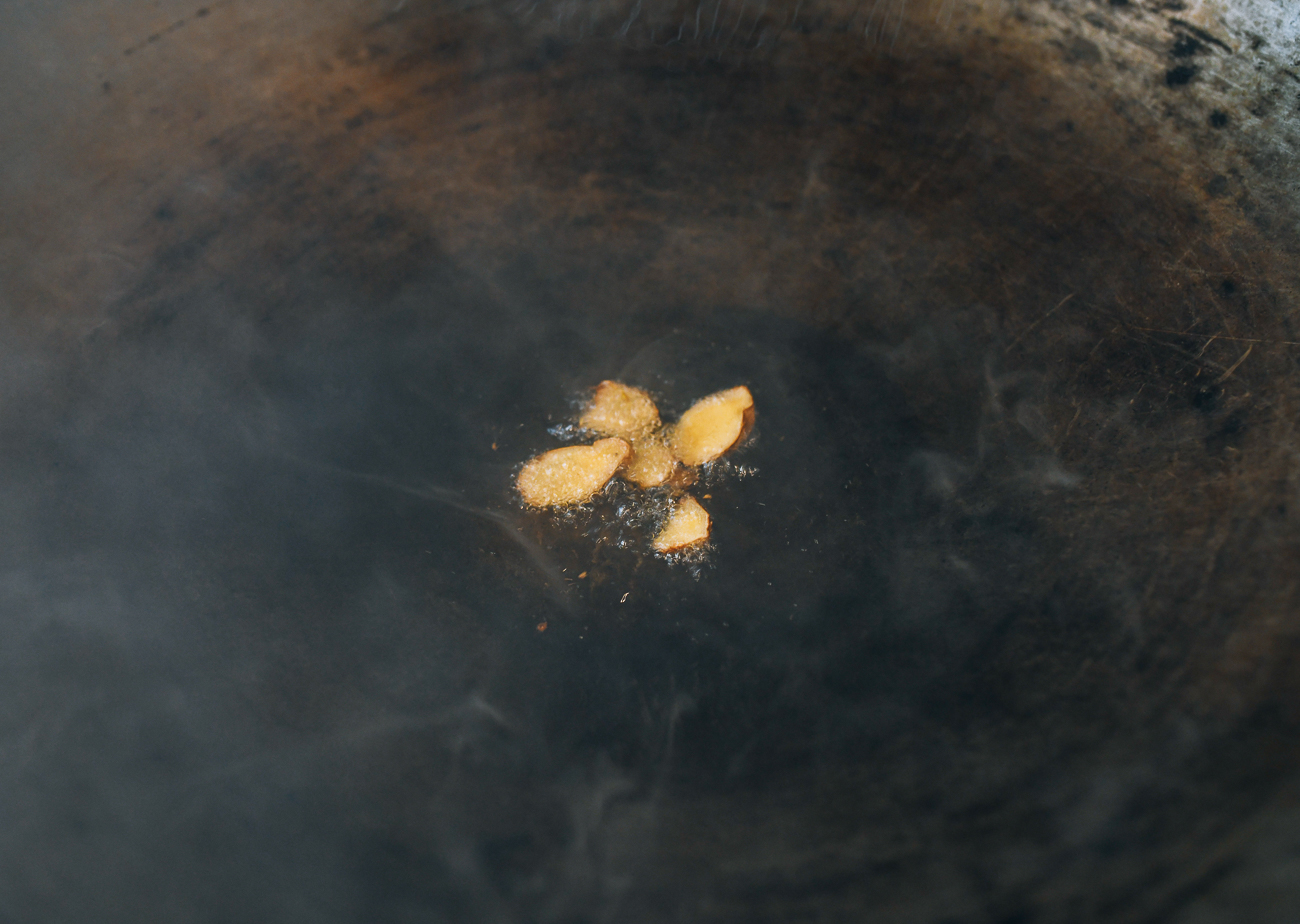
Cook until the ginger is lightly browned at the edges, and then add the mushrooms. Stir-fry for 1 to 2 minutes, until the mushrooms are tender.
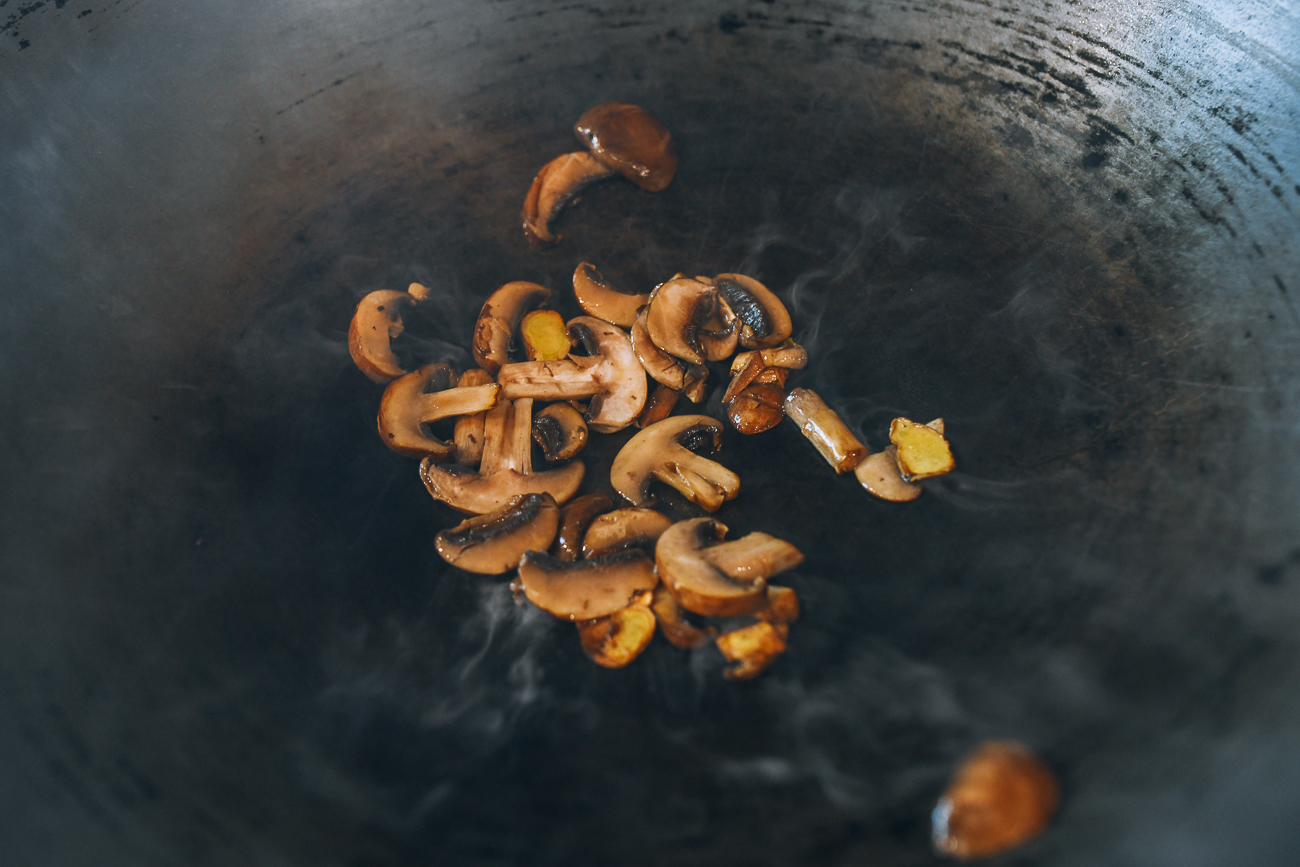
Add the carrot, celery, asparagus, bell pepper, and long hot pepper.
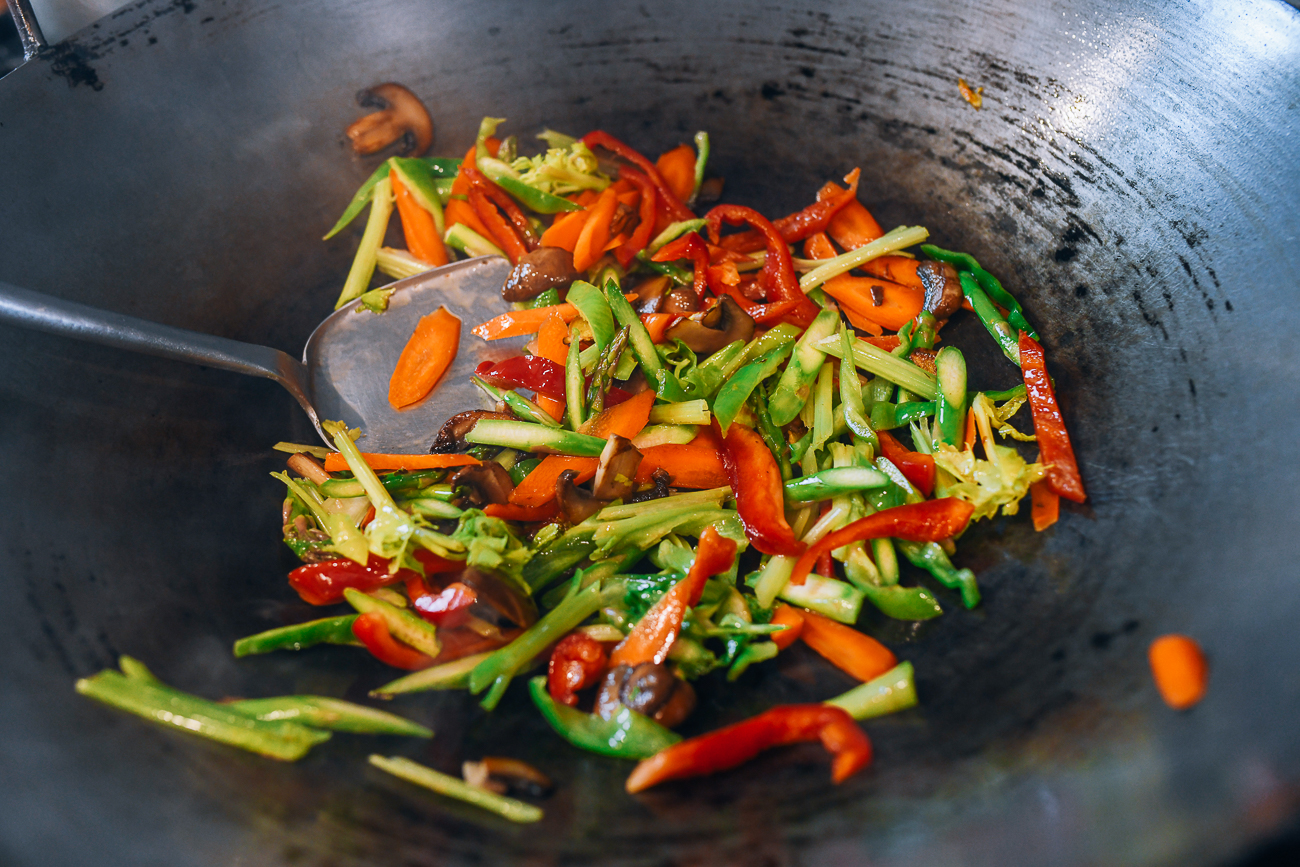
Stir-fry for 1 minute, and then add the garlic and the seasoning mixture you prepared earlier. Bring the mixture to a simmer, and cook for 1 minute, until the vegetables are tender.
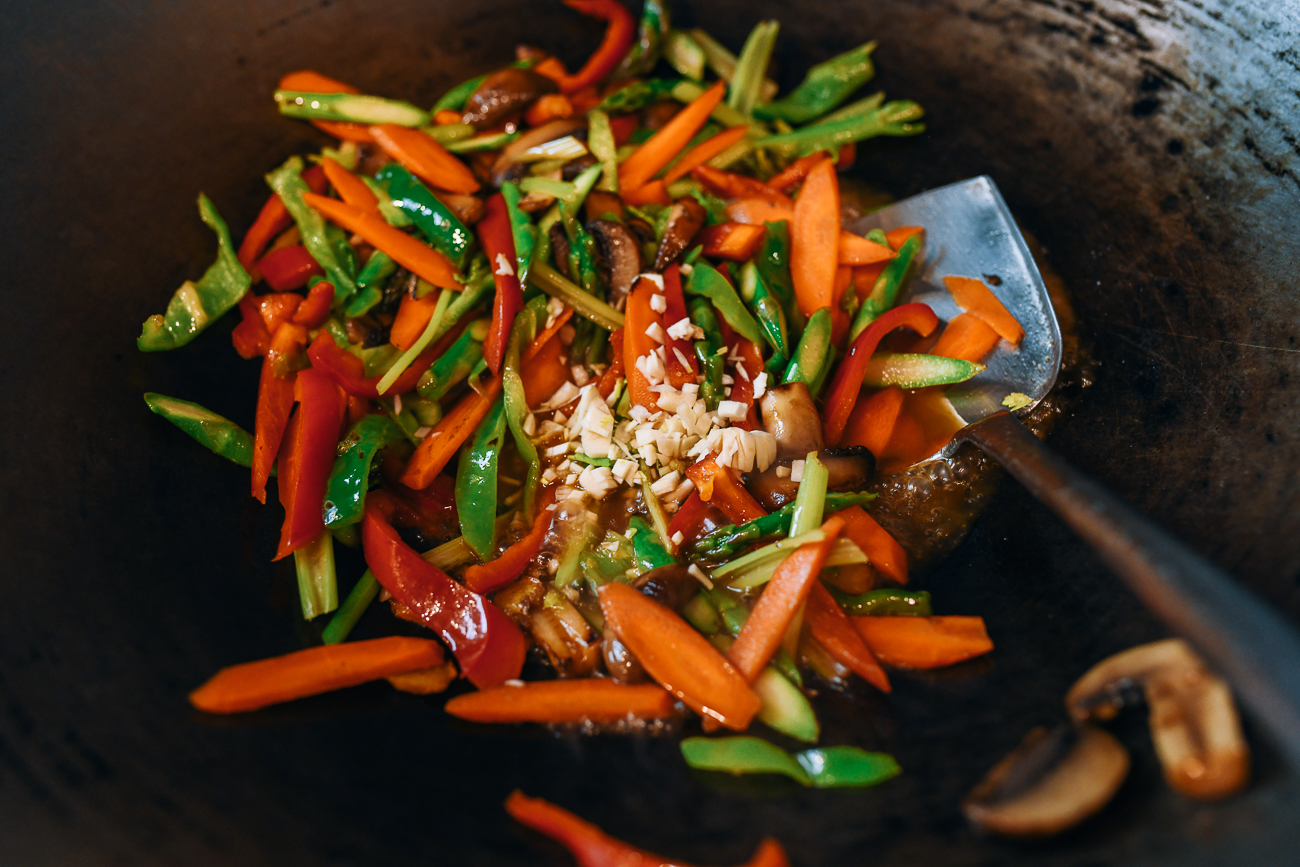
Combine the cornstarch and water into a slurry, and pour into the simmering sauce. Stir-fry until the vegetables are coated in sauce, with just a small amount of standing liquid.
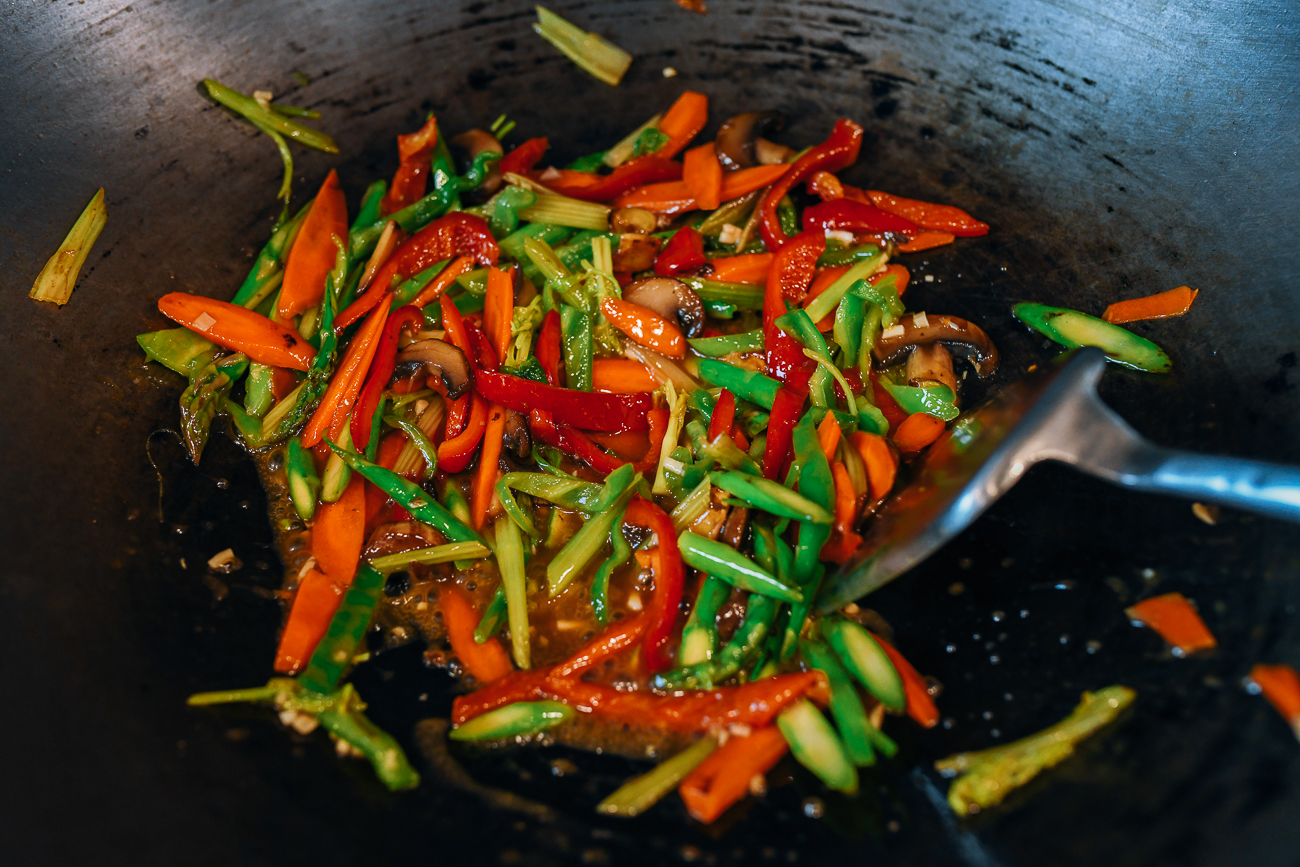
Serve.
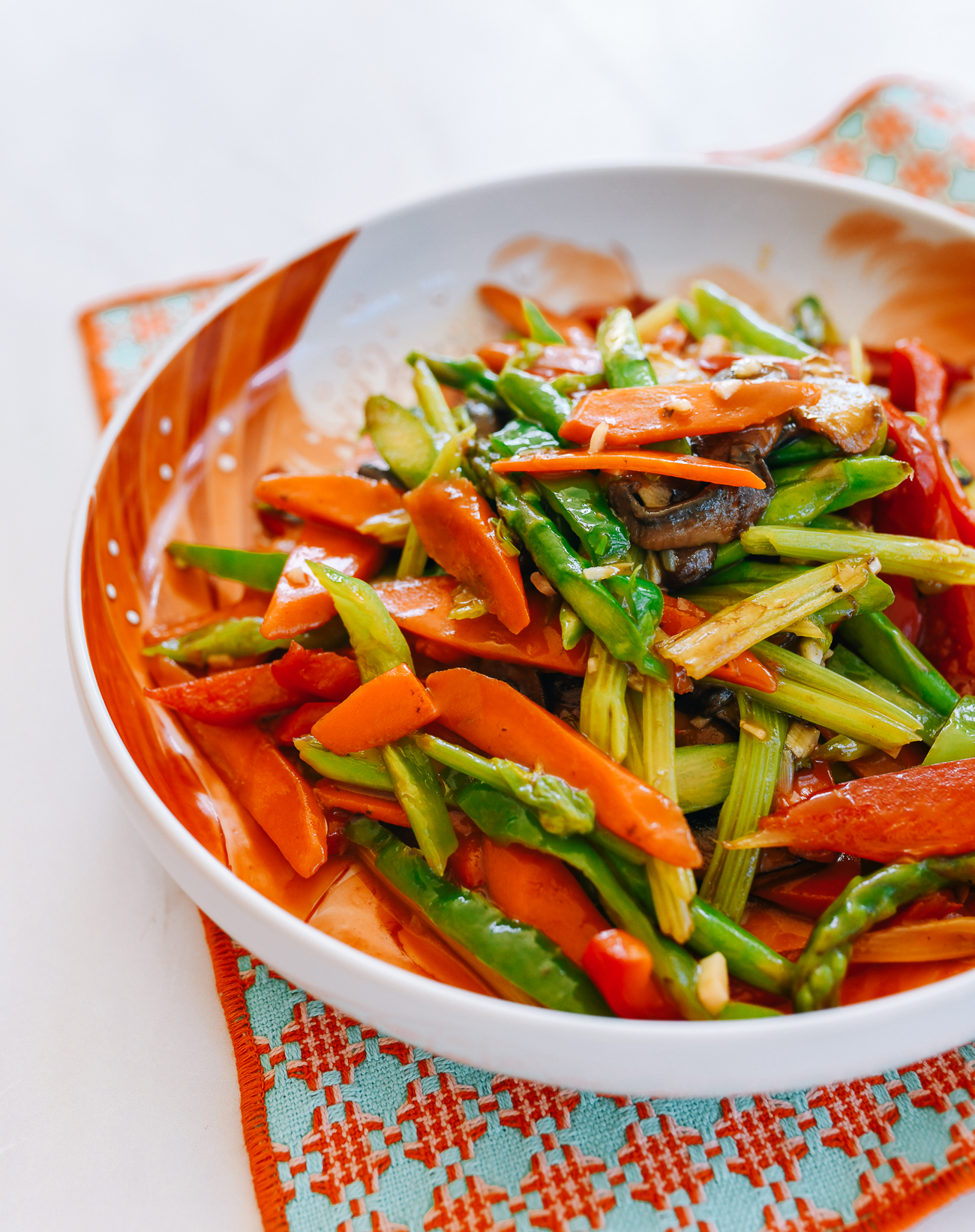
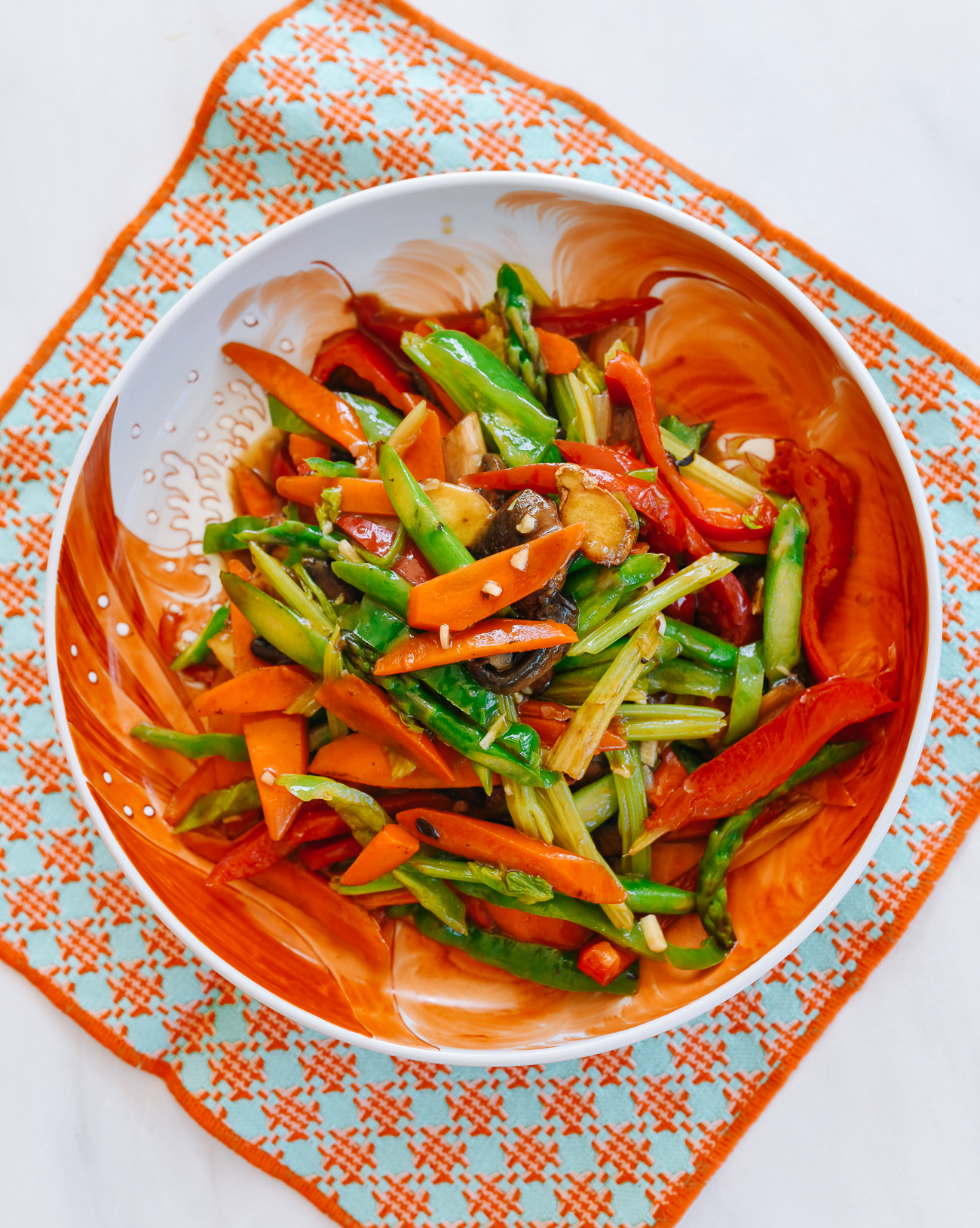
Here’s the printable recipe:
Everyday Chinese Vegetable Stir-Fry
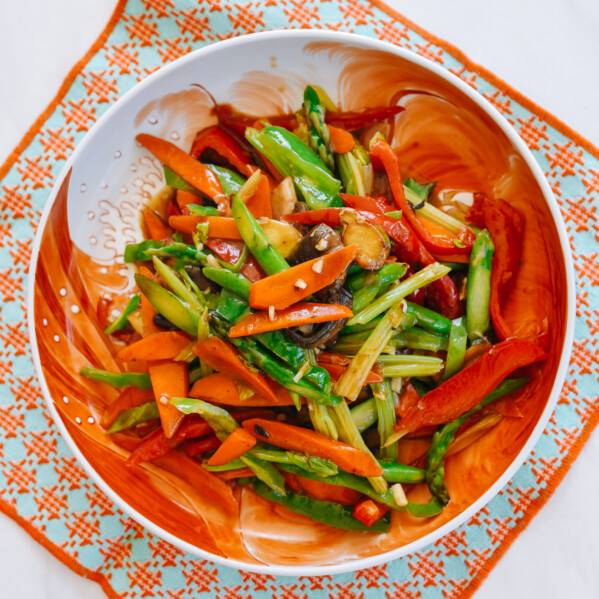
Ingredients
- 1/3 cup water (or chicken stock)
- 1 tablespoon Shaoxing wine
- 2 teaspoons oyster sauce (or vegetarian oyster sauce)
- 1/4 teaspoon salt
- 1/4 teaspoon sugar
- 1/4 teaspoon sesame oil
- 1 pinch ground white pepper
- 2 tablespoons vegetable oil
- 4 slices ginger
- 1 cup sliced mushrooms (button, baby bella, oyster, or shiitake 1 cup = about 3 ounces/85g)
- 1 cup carrots (thinly sliced on a diagonal; 1 cup = about 1 medium carrot/100g)
- 1 cup celery (thinly sliced on a diagonal; 1 cup = about 2 ounces/60g)
- 1 cup asparagus (cut into 2-inch lengths on the diagonal; 1 cup = 40g)
- 1 cup bell pepper (any color; de-seeded and thinly sliced; 1 cup = about 1/2 medium bell pepper/90g)
- 1 cup long hot pepper (red or green, de-seeded and thinly sliced; 1 cup = about 1 long hot pepper/60g)
- 3 cloves garlic (minced)
- 2 teaspoons cornstarch (mixed into a slurry with 1 tablespoon/15 ml water)
Instructions
- In a liquid measuring cup, combine the water (or chicken stock), Shaoxing wine, oyster sauce, salt, sugar, sesame oil, and white pepper.
- In a wok over medium heat, add the oil and ginger. Cook until the ginger is lightly browned at the edges, and then add the mushrooms. Stir-fry for 1 to 2 minutes, until the mushrooms are tender.
- Add the carrot, celery, asparagus, bell pepper, and long hot pepper. Stir-fry for 1 minute, and then add the garlic and the seasoning mixture you prepared earlier. Bring the mixture to a simmer, and cook for 1 minute, until the vegetables are tender.
- Combine the cornstarch and water into a slurry, and pour into the simmering sauce. Stir-fry until the vegetables are coated in sauce, with just a small amount of standing liquid. Serve.
nutrition facts
Old version of the recipe
- 2 stalks celery (cut into bite sized pieces)
- 2 carrots (thinly sliced)
- 2 cups snow peas (trimmed)
- 5 fresh shiitake mushrooms (thinly sliced)
- 1 long hot red pepper (if you prefer a milder flavor, use ½ of a red bell pepper)
- 1 long hot green pepper (or ½ of a green bell pepper)
- 3 cloves garlic (peeled and sliced)
- 3 tablespoons oil
- 1 tablespoon spicy bean sauce (doubanjiang)
- 2 tablespoons Shaoxing wine
- ¼ teaspoon ground white pepper
- ½ teaspoon sesame oil
- Salt
Heat oil in your wok using medium-high heat. Add garlic, both hot peppers and hot bean paste, and cook for about a minute. Stir constantly to prevent burning.
Turn the heat up to high and add the rest of your vegetables. Stir.
Add shaoxing wine, white pepper, sesame oil, and salt. Keep stirring over high heat for 2 to 3 more minutes. Plate and serve hot.
